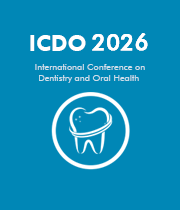Title: Understanding the difficulties in using artificial teeth for pre-clinical teaching
Abstract:
Introduction: Within dental education, there is a distinct need for hands-on pre-clinical training before a patient’s treatment is carried out for the first time. Throughout the years, numerous techniques have been developed to teach students the anatomy and to perform various dental techniques. The standard practice within the UK is a combination of using artificial models and extracted human teeth during pre-clinical training. Both techniques have advantages and disadvantages, however, extracted teeth are seen as the gold standard, but due to low availability dental schools have had to rely more heavily on the use of artificial models. Students’ perception, however, shows a dissatisfaction with artificial models due to physical characteristics of these teeth, making them more difficult to treat compared to natural. Students recognise the advantage of these artificial models but suggest improvements, such as the hardness of resin teeth to reflect the hardness of natural tissues.
Objective: The aim of the study was to understand the differences in mechanical properties between extracted human teeth and commercially available artificial models.
Methods: In the study mechanical testing carried out included microhardness, tensile strength, and fracture toughness. Sound extracted human teeth were selected and imaged using X-ray microtomography (XMT) to ensure no presence of caries. Microhardness was carried out using 2 mm slices of teeth using Vicker’s indentation with a load of 25 gf for 12 secs, and a maximum of 90 indentations was made across both enamel and dentine. Tensile strength was carried out using a micro-tensile tester under a scanning electron microscope. Fracture toughness was measured using Vicker’s indentation with a load of 500 gf and measuring the fracture lines using optical microscopy and XMT. An experiment was designed to measure the force dentists applied when cutting both extracted and artificial teeth. With teeth being mounted to a 3-axis load cell, and force data being recorded in real-time as dentists performed a Class I cavity preparation. Results: Results from the microhardness showed extracted enamel and dentine was harder than artificial, with this being confirmed with the fracture toughness. Tensile measurements showed artificial enamel and dentine had a higher tensile strength compared to extracted suggesting a higher elasticity in the artificial. Contrary to what was found in the mechanical testing, it was found that the dentists exhibited more than double the force to cut artificial teeth compared to extracted. Non-clinicians were asked to perform the same procedure and showed similar results, suggesting that there is difficulty in performing dental procedures on artificial models. Conclusion: Further testing looking into Young’s modulus of each material may offer an explanation as to why there is a difference between performing procedures on the two materials.




